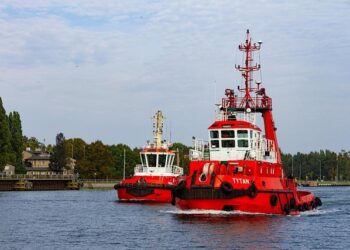It is known that there is invisible gold, which consists of minuscule particles locked inside other minerals in the mine dumps found all over the Johannesburg and Witwatersrand area. What makes Chingwaru’s research noteworthy is that, as a Master’s degree student whose research was upgraded to a PhD, he is the first scholar to calculate that the six billion tons of tailings around the Witwatersrand mines contain up to 460 tons of gold. In an interview with BizNews, Chingwaru said that the tailing dumps in the Johannesburg area are being reprocessed by mining companies, but they are only achieving a 30% recovery rate. He set out to locate the remaining 70% and determine how to safely extract it from the pyrite. Chingwaru’s research has attracted the attention of major mining companies, and he has also received interest from China. Armed with his PhD, he plans to venture overseas to expand his knowledge of mining. However, he intends to return to Africa to promote sustainable mining practices for South Africa and the African continent. Chingwaru is the grandson of the legendary prospector, George Nolan who discovered lithium in Zimbabwe.
Sign up for your early morning brew of the BizNews Insider to keep you up to speed with the content that matters. The newsletter will land in your inbox at 5:30am weekdays. Register here.
Watch here
Listen here
Full transcript of the interview
Linda van Tilburg (00:07.0)
I am Linda van Tilburg and joining me today is Dr. Steve Chingwaru. He’s a recent PhD graduate from Stellenbosch University and his research suggests that there could be a significant amount of gold in mine dumps around Johannesburg.
Hi Steve and thank you for joining us.
Steve (00:48.659)
Thank you for having me. It’s a pleasure to be here.
Linda van Tilburg (00:52.316)
Well, could you share the main findings of your research with us, please?
Steve (00:56.755)
Yes, first I would just like to give a bit of background with what mine tailings are. So, the Witwatersrand is one of the largest gold deposits that have ever been discovered. This was discovered in the 1800s and they’ve been mining this for over a century. They’ve mined about 53 ,000 tons of gold from this deposit andthis has accumulated over 6 billion tons of mining waste from this. So, the Witwatersrand gold, how it’s extracted is using a traditional gold extraction process called cyanidation using the chemical cyanide, which dissolves gold, which can then be recovered later. This process has been happening for over a century and has accumulated these tailings dumps or these mine waste in and around theWitwatersrand red mining region. However, now they have been trying to reprocess these mining dumps and they’re using the same methodology or the same method of cyanidation, trying to dissolve the gold that is left over. However, they’re getting a 30 % recovery of this from these tailing dumps. So, my job was to find out why there is 70 % that is still not being recovered by cyanide and what we discovered here at Stellenbosch University was that this gold is hosted within the mineral pyrite. For layman’s terms, that’s fool’s gold and it is hosted within this mineral as very, very tiny, youcould say atomic gold within this mineral and that when it’s hosted within this mineral, it’s undissolvable by cyanide, henceforth the name invisible gold.
Linda van Tilburg (02:59.324)
So, is there a method that it could potentially be extracted?
Steve (03:04.595)
Yes, so invisible gold within pyrite is nothing new. Our very own gold deposit in Barberton in Mpumalanga has a substantial amount of invisible gold hosted within the minerals arsenopyrite and pyriteand they use microbial extractions using bacteria to eat away at the mineral and then therefore liberating or getting this gold out.
So there are many methods to get this gold out. However, having this gold in the Witwatersrand was severely lacking in the literature, hence why it wasn’t implemented or it’s not being done.
Linda van Tilburg (03:45.628)
Are mining companies coming to you or what is happening?
Steve (03:51.027)
A lot of mining companies, small scale and large companies have been approaching me and said this is a magnificent, good discovery. Is there profitability in this? What was my methodology in doing this? And how beneficial will it be? I’ve been also approached by international companies. I got an email from one of the largest gold producers in China the other day, which sent me an email saying, good potential in this project.
Linda van Tilburg (04:28.092)
So, how much gold do you think they ease?
Steve (04:32.723)
So, in this mineral pyrite alone, there’s over 420 tons of gold. That amounts to approximately R450 billion.So, that’s a substantial amount of gold. And just for context, the largest gold deposit that’s being mined is the Nevada Gold Projects. And this has 320 [tons of gold] So, you can do a comparison. It’s a lot of gold.
Linda van Tilburg (05:01.34)
If companies are now interested in it, who does it belong to?
Steve (05:07.155)
According to a lot of the laws during that time in the 1900s and going on to now into modern times, legislation had it that if you finished mining, the remains belong to government. So, when I was doing my research, there’s over 500 tailings dams alone in the Johannesburg area and a lot of these belong to the city of Johannesburg. So, it belongs to government.
Linda van Tilburg (05:40.732)
Well, the government, the City of Joburg, has a money problem. Could this help them?
Steve (05:46.163)
If they award mining licenses and if there’s proper legislation and investor potential thenyes,, it could help them a lot.
Linda van Tilburg (06:02.716)
So, who should put this legislation into place?
Steve (06:07.315)
think the government should then sort of get into this and put legislation in place. WhenI talk about legislation, I also mean to the benefits of the people, because these tailings dumps are very proximal, very close to major urban settlements, especially these high-density urban settlements andnd these contain a substantial amount of cobalt, copper and uranium as well as arsenic and this has detrimental health issues to the people who are staying close to these tailings dumps..
It was brought up in the meeting when I went to, I was a guest speaker for the Public Protector of South Africa and this was brought up that there are some young students close to these tailings dumps, primary schools close to these tailings, and they lung issues because of these tailings dumps, they have uranium in it. So, if we were to mine these properly or to get these away from the major settlements, this would be beneficial. So, legislation should also focus on the environmental aspect and the aspect to helping people.
Linda van Tilburg (07:26.684)
Do they also contaminate water?
Steve (07:30.195)
Yes, Johannesburg right now has a very, very, very bad acid mine drainage problem right now. And acid mine drainage, if I can just explain it, is directly caused by this mineral pyrite, which has the gold in it. Pyrite, when it’s exposed to oxygen and air and water, it starts to break down and it releases sulfuric acid and it also releases the heavy metals that are hosted within it. So, if we mine this, we’re directly recovering and stopping acid mine drainage at its tracks.
Linda van Tilburg (08:11.836)
Well, for people who might not be able to visualize this, we from South Africa know about these mine dumps. We drive past them and don’t even think about them. You know, just describe a little bit where are they and what do they look like?
Steve (08:25.843)
They are these hills. When I was growing up, I thought these were natural features. I grew up in the Johannesburg area. So, these are just hills of very, very fine sand. And these are dotted all across the city. All across, and it’s not just in Johannesburg alone. There is tailing stems in the town of Evander, Klerksdorp, Carletonville.. They are all across this mining region. The Witwatersrand is very vast. So, even in the Welkom area, which is in free state, they are tailings dumps. It’s just these massive, about 10 to 20 meter tall, very fine-grained sand dunes. They look like sand dunes, basically.
Linda van Tilburg (09:15.357)
So Steve, do you foresee an invisible gold rush? In South Africa, we are attracting these illegal miners from the surrounding countries. Do you think people, when this is known and people realise more what could be in there, that people would start coming to South Africa to try to mine them?
Steve (09:35.795)
I’ll just like to tell the difference between what the tailings dumps are and what the illegal miners, i .e. the Zama Zamas are after. So, what the Zama Zamas are after are what is in the mine shafts, what is underground. A lot of mining companies have abandoned these mines because the gold deposit has matured, it’s finished, but there is these leftover…very tiny pieces of gold that are still left over. That is what they are targeting. They are targeting native gold. Whereas in the tailings, it is very fine dust and it’s within the mineral pyrite. What we say in a metallurgical sense is that it is low grade, meaning the gold concentration is low, but high tonnage, which means that in order to get a substantial amount of gold, you need to process this at a very high tonnage. You need tons and tons of material for this. Whereas if an individual person wants to do it, they wouldn’t get any gold out because it’s so low concentration, but high tonnage. There’s a lot of it within the low concentration within a high amount of material.
Linda van Tilburg (11:02.78)
So, that’s not what they’re after because it’s too small for them. So you need technology and you need big money to be able to do that.
Steve (11:12.979)
Yes, yes, agreed.
Linda van Tilburg (11:15.932)
So, would the amount of gold that you would manage to extract if you’re a company that’s interested in doing this, would it be worthwhile? What is it worth in terms of brand or dollar terms?
Steve (11:27.411)
So right now, big companies like DRD-, Harmony- and Pan-African Gold are processing these tailings and getting 30 % off and they’re making a substantial amount of profit. Whereas in if you were to in place a pre -treatment to get this gold out of pyrite out, you would improve your recovery by approximately 60%, which is…very much. It’s 30 % more or you can even get as much as 70 to 80 % from this pyrite. And with the gold price now, you’re talking of millions of rands which you can get profit from. Of course each tailings dam within each goldfield is different. But if you create a huge robust processing plant, you will get a substantial amount of profit just by putting these at high tonnages and you can get a lot of gold out.
Linda van Tilburg (12:37.948)
Very interesting. So what is your background? You’ve got a mining pedigree, don’t you? Why this interest in gold mining?
Steve (12:47.059)
So yes, my grandfather, George Henry Nolan, is a very famous prospector. He’s the one who discovered the Bikita pegmatite, which is the largest lithium deposit in Africa right now. He discovered it in the 1930s, around that time. Yes, in articles, they say he has mining in his blood. So yes, that also inspired me.
Linda van Tilburg (13:13.276)
Yeah, you do.
Steve (13:15.539)
I have a geology background. At Stellenbosch, I studied geology and then did my honours in geology. And then I did my master’s in geometallurgy, which is a combination of chemical engineering and geology. That master’s was upgraded to a PhD. So that is sort of my background. Yeah.
Linda van Tilburg (13:39.292)
So, and what next for you? What would you like to do after this?
Steve (13:44.211)
I am a huge believer in sustainable mining. I believe that mine waste is the future of mining, especially now. We need it now more than ever because we’ve exhausted our high-grade deposits. This is evidence within Witwatersrand. A lot of South Africa’s gold production has been dropping since the 1960s. I believe tailings are going to be an alternative resource for South Africa in terms of gold. And I also want to work with mine waste from different deposits for the energy green transition. As you know, we are in an age where we are trying to decrease our carbon footprint and the only way to do this is using changing our electricity production. But this requires a substantial amount of metals.
I believe that tailings, as I said before, the Witwatersrand has a lot of cobalt, copper, nickel. These are transitional metals that are required for green energy. So, this can also be an opportunity to have sweetener metals getting gold out as well as acquiring these metals which are deleterious or bad for the environment, but also good for the Green Energy transition.
Linda van Tilburg (15:14.844)
Would you like to study it further or go and work in the mining industry, stay to South Africa, move some of the other big mining countries like Australia, Canada, that also have these kinds of mines?
Steve (15:28.787)
I’m a big fan of Africa, very much a proud African, but I would love to venture off. Europe, Canada, Australia have very technologically advanced in terms of extraction of these metals and extraction in a metallurgical sense. So, I would like to broaden my horizon in terms of knowledge. If the opportunity presents itself, go overseas, acquire this knowledge and come back and It’s for the benefit of the African economy and the African people.
Linda van Tilburg (16:04.7)
Thanks so much for speaking us Steve Chingwaru.
Steve (16:09.107)
Thank you so much for having me.
Read also:
Bad blood between CR, Julius & Zuma should keep RET bloc out of power-share…
Schreiber on Court ruling: ANC’s koki pen can’t keep deployed cadre names secret
Songezo Zibi: Don’t be a cry baby, John
Visited 59 times, 59 visit(s) today
>>> Read full article>>>
Copyright for syndicated content belongs to the linked Source : BizNews – https://www.biznews.com/good-hope-project/2024/04/19/steve-chingwaru-460-tonnes-of-gold































